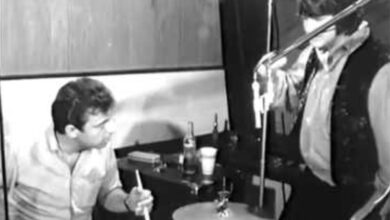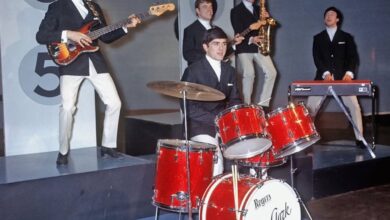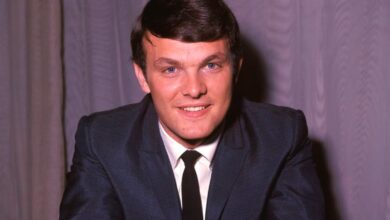Kitty Wells Delivered A Timelessly Heartfelt Performance Of “Making Believe”
In 1955, Kitty Wells released “Making Believe,” a poignant ballad that would become one of her most enduring hits. The song, written by Jimmy Work, delves into the heartache of unrequited love, capturing the essence of longing and sorrow. Wells’ emotive delivery and the song’s melancholic melody resonated deeply with audiences, solidifying its place in country music history.
Kitty Wells, born Muriel Ellen Deason on August 30, 1919, in Nashville, Tennessee, began her musical journey singing gospel music. She married Johnnie Wright in 1937, and together they performed as part of various musical groups. Wells adopted her stage name in 1943, inspired by a popular folk song titled “Sweet Kitty Wells.” Her breakthrough came in 1952 with the release of “It Wasn’t God Who Made Honky Tonk Angels,” a song that challenged the male-dominated narratives of country music and paved the way for female artists in the genre.
“Making Believe” was originally recorded by Jimmy Work in 1955, reaching number five on Billboard’s country music jukebox charts. Wells’ rendition, released shortly after, climbed to the number two spot on the country charts, where it remained for an impressive 15 weeks. Despite its success, the song was kept from the number one position by Webb Pierce’s “In the Jailhouse Now,” which held the top spot for 21 weeks.
The song’s lyrics convey the pain of pretending to be happy while knowing that a former lover will never return. Lines like “Making believe that you still love me” and “I’ll spend my lifetime loving you and making believe” encapsulate the torment of unreciprocated affection. Wells’ sincere and heartfelt performance brought these emotions to life, allowing listeners to connect with the song on a personal level.
At the time of its release, “Making Believe” further established Wells as a leading figure in country music. Following her initial success with “It Wasn’t God Who Made Honky Tonk Angels,” Wells continued to break barriers for female artists in the industry. Her success demonstrated that women could achieve sustained popularity in country music, inspiring future generations of female country singers.
The impact of “Making Believe” extended beyond its initial chart success. The song has been covered by numerous artists across various genres, including Emmylou Harris, Johnny Cash, and Ray Charles. Each rendition offers a unique interpretation, yet all pay homage to the emotional depth of the original. The song’s universal theme of heartache and longing has allowed it to transcend time, remaining relevant to audiences decades after its initial release.
In the broader context of country music, “Making Believe” exemplifies the genre’s storytelling tradition. The song’s narrative structure and emotional honesty are hallmarks of country music, reflecting the human experience in a way that is both personal and universal. Wells’ performance of the song highlights her ability to convey complex emotions with simplicity and grace, a skill that contributed to her enduring legacy.
Throughout her career, Wells continued to release songs that resonated with audiences. Tracks like “Release Me,” “I Can’t Stop Loving You,” and “Amigo’s Guitar” further showcased her talent for interpreting songs with emotional depth. Her contributions to country music were recognized with numerous accolades, including her induction into the Country Music Hall of Fame in 1976.
The legacy of “Making Believe” is evident in its continued presence in popular culture. The song has been featured in films, television shows, and commercials, introducing it to new audiences and reaffirming its timeless appeal. Its enduring popularity is a testament to the song’s emotional resonance and the lasting impact of Wells’ performance.
In conclusion, Kitty Wells’ 1955 rendition of “Making Believe” stands as a significant milestone in country music history. The song’s heartfelt lyrics and Wells’ emotive delivery have ensured its place as a timeless classic. Through this song, Wells not only solidified her status as a pioneering female artist in country music but also left an indelible mark on the genre that continues to influence artists today.



